
By Shel Horowitz
It’s the little things that really have an impact. The bus passes, the shoes and purses. The little bits of ordinary life from people no longer living it.
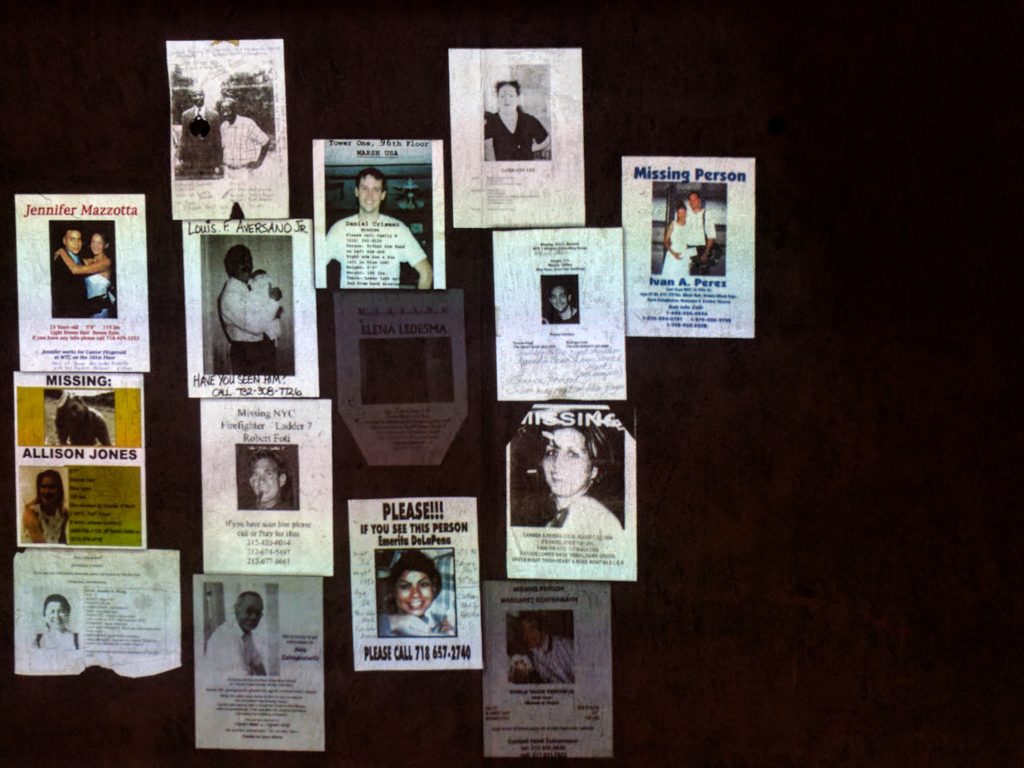
Even though I’d moved out of New York more than 20 years before, 9/11 was deeply personal to me. My ex-housemate from my Brooklyn days was living on Vesey Street, abutting the World Trade Center complex. It took me two weeks to find out she was okay. I knew several people who were friends with the two people from our area who had died there. And at least two friends actually saw one tower fall; one of those had been on her way to work—and, thankfully, was running late.
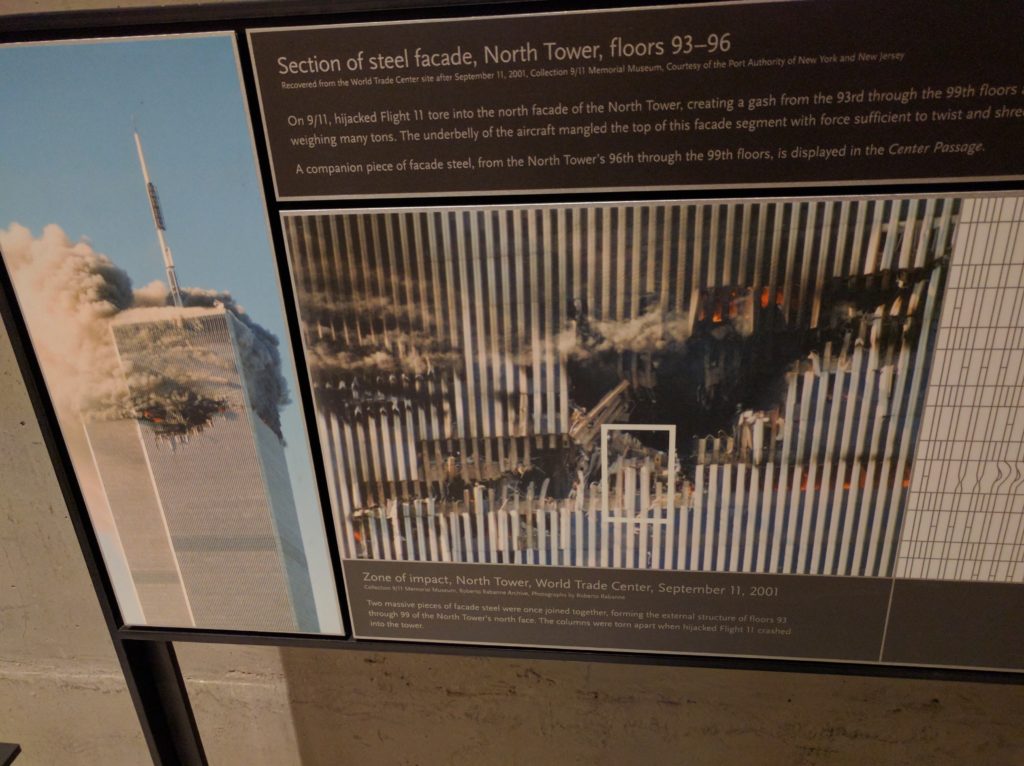
The other was that ex-roommate, who had been at a meeting a few miles north. I first visited Ground Zero just weeks after 9/11, and went back several times, including spending one morning with Occupy Wall Street, which was just steps from the WTC site.
Going way back, I was living in a high-rise apartment in the Bronx as a high school student. We had a view of Manhattan and I watched the Twin Towers change the skyline bit by bit, as they stretched toward the sky.
And after they were attacked, I watched with horror as George W. Bush built up the repression and war machinery in response. I was out there in the streets with hundreds of thousands of others, protesting before and in the early stages of the Iraq war.
So it was with great interest and a bit of trepidation that went to the 9/11 Memorial. Would it be sensationalized? Unpleasantly jingoistic and in-your-face flag-waving? Horribly depressing?
Happily, the answer to all of these was no. I spent four hours there. Not enough to see everything, but enough to see a lot. I found nearly all of it to be tasteful, sensitive, and honoring the best parts of those who’d died.
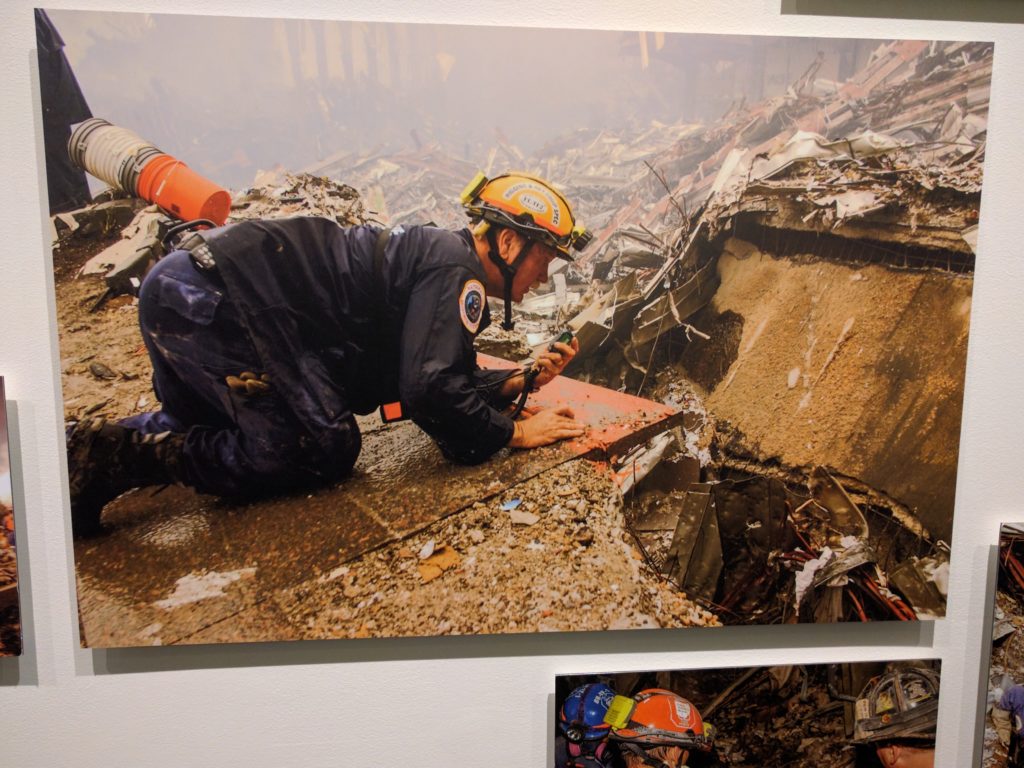
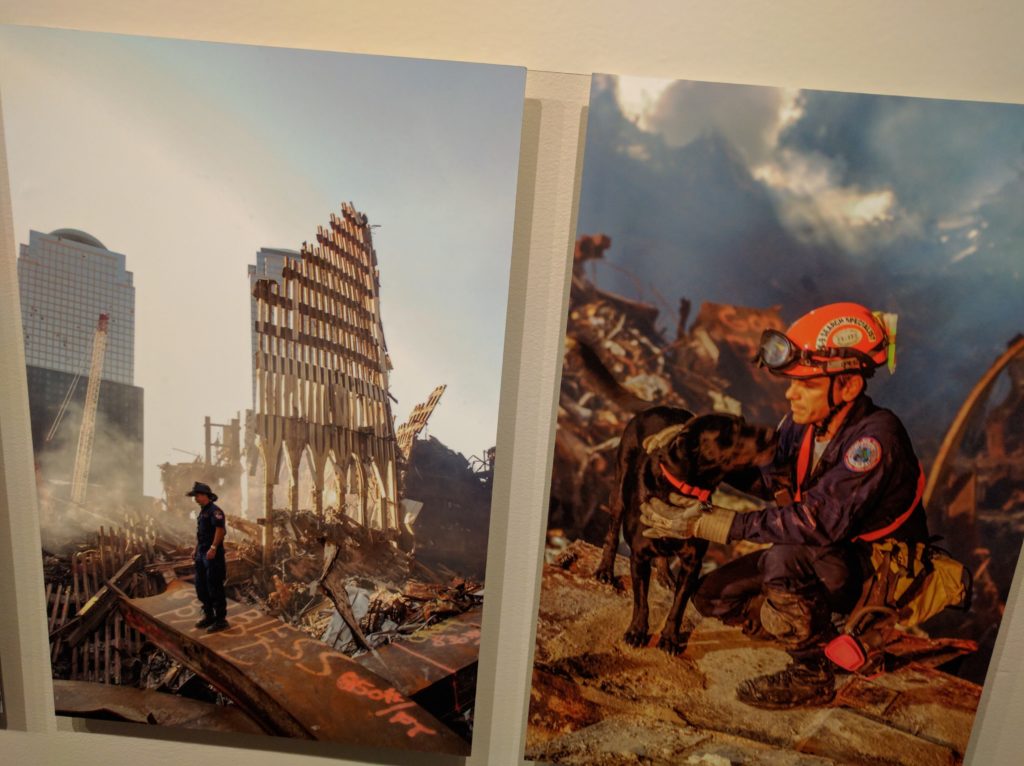
Moreover, I came away feeling inspired by so many individual acts of heroism—within the ranks of police, fire, and medical responders, the brave passengers who retook the cockpit after their plane was hijacked, and the ordinary people who helped others find their way out of the towers and to safety (sometimes at the cost of their own lives). I was also deeply moved by real stories of the victims as everyday people, told in audio recordings by their loved ones.
Some other highlights for me:
• A fire truck and ambulance that responded to the first crash and were heavily damaged in the second
• A large chunk of the famous communications tower that rose from the roof
• The “Survivors’ Stairs” that once stood on the exterior, and was the escape path for many
• Twisted steel columns and girders from the wreckage
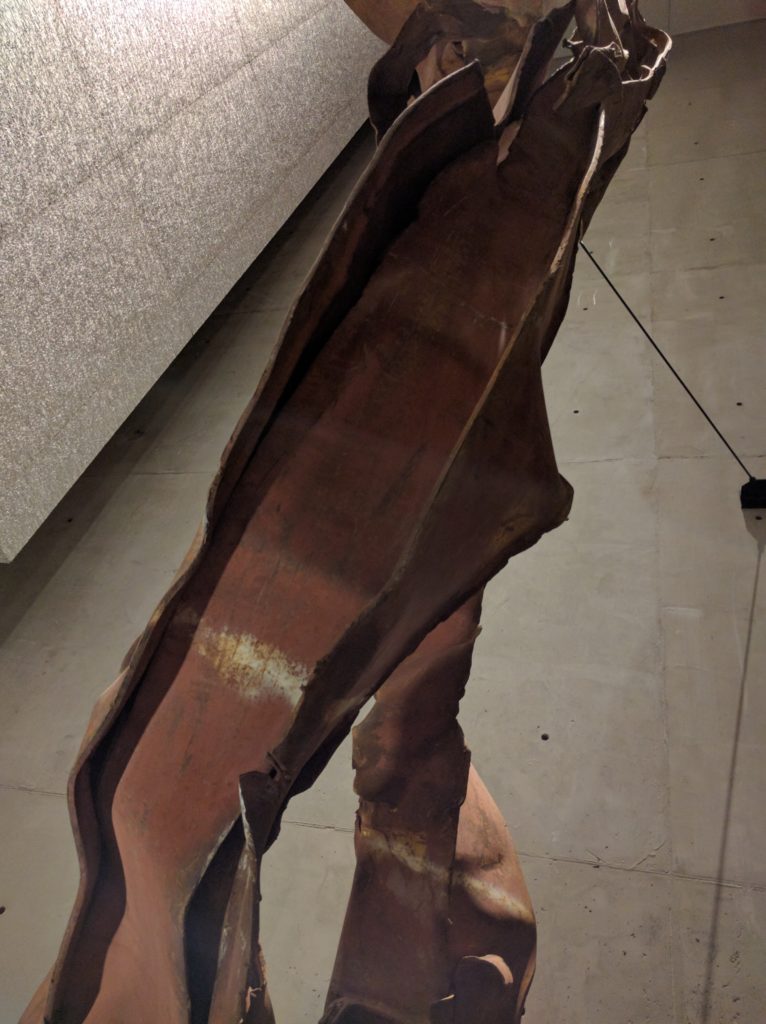
• Holographic projections of “missing” fliers tacked up by loved ones
• A montage of film clips from many sources, including tenant recruitment films
• Information about the very innovative construction techniques pioneered at the WTC
• Interviews with survivors, responders, and family members
• The docents, who gave mini-lectures whenever a few people gathered around, and who were extremely knowledgeable about their little piece of the story
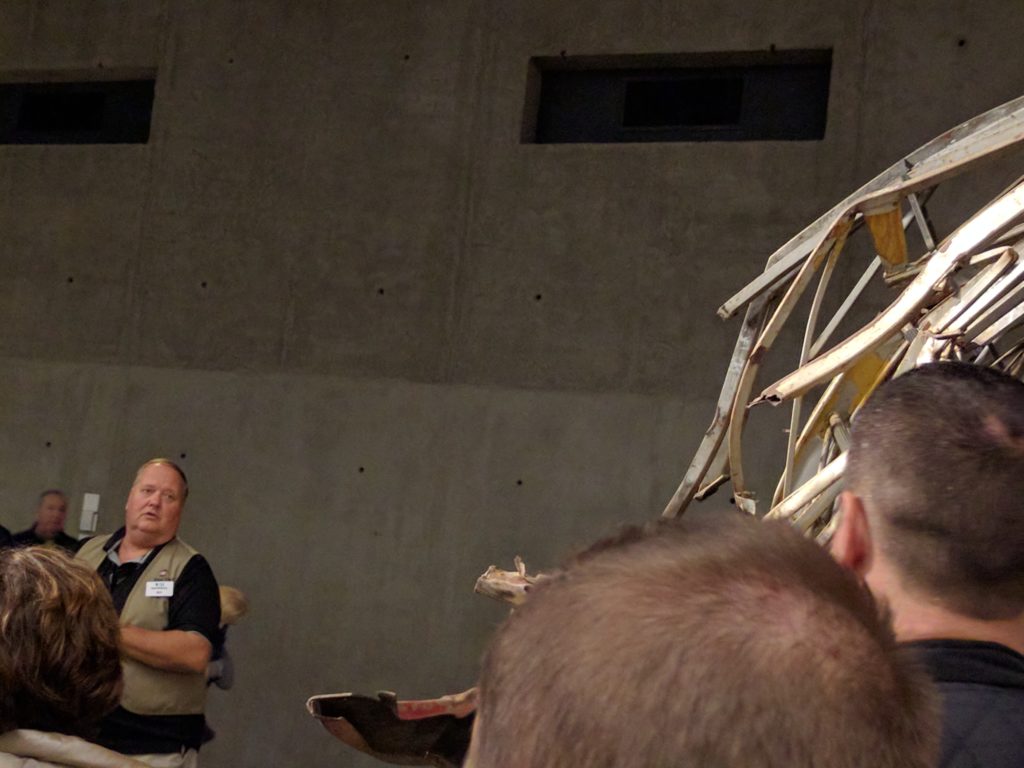
• “Hope at Ground Zero,” Andrea Booher’s remarkably passionate official FEMA photographs of the Ground Zero rescue workers
• The exhibit on what was happening all during that fateful day (even including security camera footage of several hijackers going through airport security being stopped and wanded, and then waved through when the wands didn’t catch the infamous box cutters)
Really, the only exhibit I saw that bothered me was the short film, “Rebirth at Ground Zero.” After standing about 40 minutes to get in, plus half an hour right before to see the movie montage, which was displayed in an area without seats, my legs were pretty tired. I found this movie far too rah-rah and wrapped in the flag. It felt like a propaganda film.
Interestingly, even though none of the exhibits I saw even addressed this issue, I also came away convinced that many of the conspiracy theories around 9/11 are nonsense. The journalist in me is convinced that the burned and disfigured airline parts on display are genuine and were found at the site…that the eye witnesses are telling the truth…that whatever happened to Building 7, its collapse was not likely to be dynamite placed much earlier.
This doesn’t explain many of the elements of the government’s response, where I do have cause to wonder. One of the items on display is the intelligence briefing George W. Bush received in August that Bin Laden was poised to strike in the US. And such issues as the rush to dump the wreckage before it could be examined by forensic teams still raise questions. But I am least finally convinced that the wilder claims about that awful day are without merit.
Shel Horowitz is editor of Global Travel Review. His latest book is Guerrilla Marketing to Heal the World